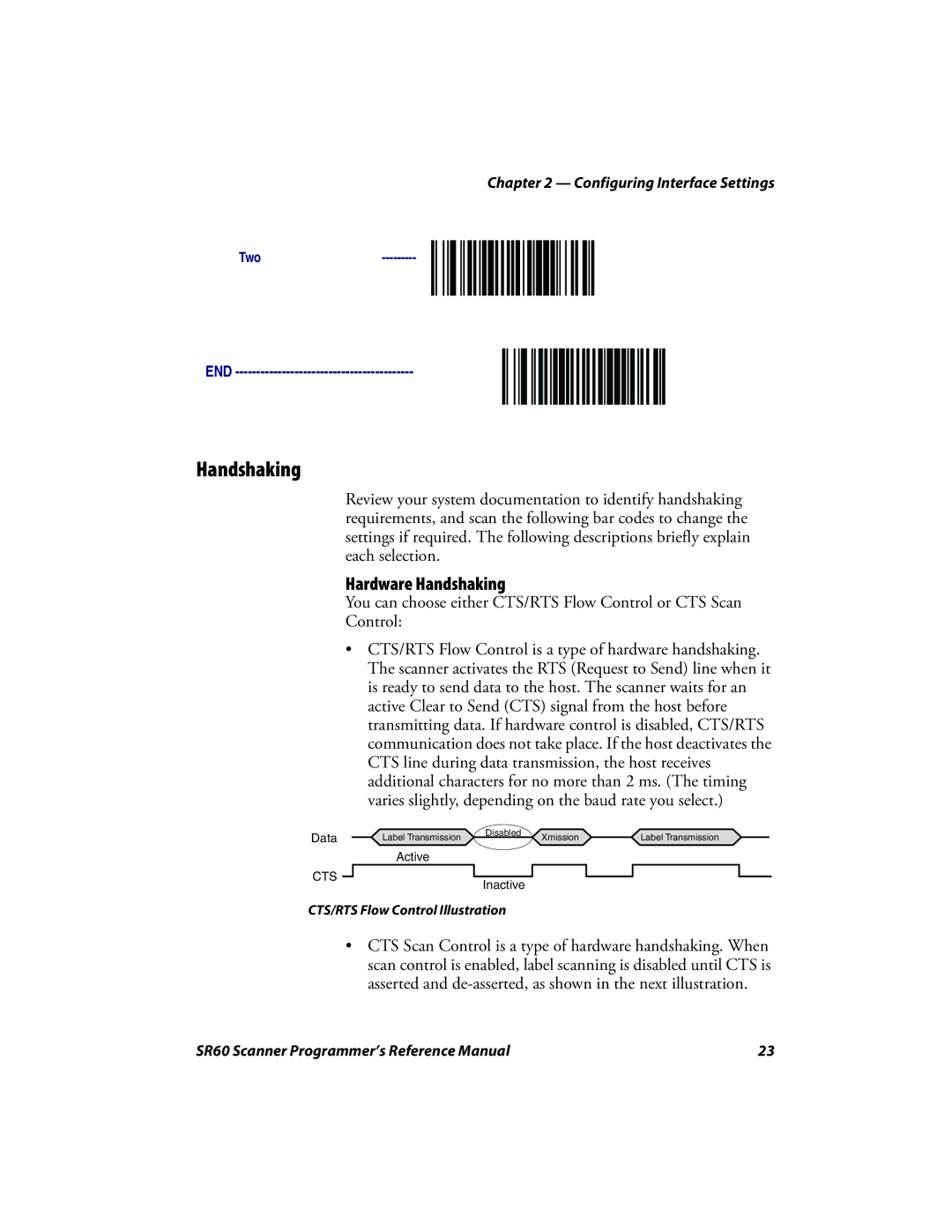
Chapter 2 — Configuring Interface Settings
Two---------
END
Handshaking
Review your system documentation to identify handshaking requirements, and scan the following bar codes to change the settings if required. The following descriptions briefly explain each selection.
Hardware Handshaking
You can choose either CTS/RTS Flow Control or CTS Scan
Control:
•CTS/RTS Flow Control is a type of hardware handshaking. The scanner activates the RTS (Request to Send) line when it is ready to send data to the host. The scanner waits for an active Clear to Send (CTS) signal from the host before transmitting data. If hardware control is disabled, CTS/RTS communication does not take place. If the host deactivates the CTS line during data transmission, the host receives additional characters for no more than 2 ms. (The timing varies slightly, depending on the baud rate you select.)
Data | Label Transmission | Disabled | Xmission | Label Transmission |
|
Active
CTS ![]()
Inactive
CTS/RTS Flow Control Illustration
•CTS Scan Control is a type of hardware handshaking. When scan control is enabled, label scanning is disabled until CTS is asserted and
SR60 Scanner Programmer’s Reference Manual | 23 |
